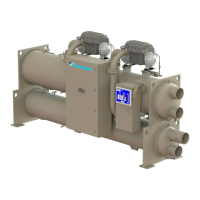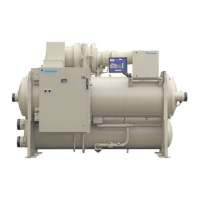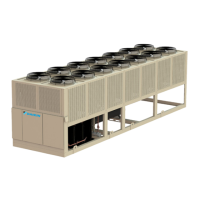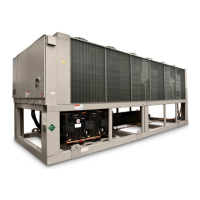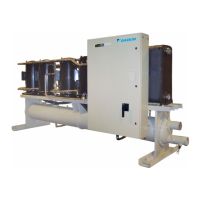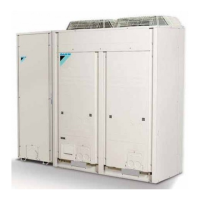7
IOM 1264-4
WWW.DAIKINAPPLIED.COM
INSTALLATION
CAUTION
Lifting mechanisms must not make contact with the unit beyond
the lifting bracket. Extreme care must be used when rigging the
unit to prevent damage to the control panels, unit handles, unit
piping, and unit frame.
Lifting Points
Lifting points are predetermined by design. When lifting, all
factory installed lifting brackets must be used. Figure 3 illustrates
typical 4 point lifting conguration, with four lifting points on each
side of the unit. The unit must remain level throughout the entire
lifting event. Level is dened as one end being no more than
0.25” per foot of unit length to the opposite end.
WARNING
Be aware that the center of gravity may not necessarily be in the
geometric center of the unit. No additional items can be added
to a lift with the unit as it may aect the center of gravity and
cause unit damage, property damage, severe personal injury, or
death. Refer to as-designed, certied drawings for weight, center
of gravity location and details specic to unit conguration.
Figure 3: Lifting Points Locations
Transit and Temporary Storage
If the unit is stored for an intermediate period before installation
or moved to a dierent location, take these additional
precautions:
1. Support the unit well along the length of the base rail.
2. Level the unit (no twists or uneven ground surface).
3. Provide proper drainage around the unit to prevent ooding
of the equipment.
4. Provide adequate protection from vandalism, mechanical
contact, etc.
5. Securely close the doors and lock the handles.
6. Long term storage in humid environments may cause
condensate corrosion on steel surfaces. Consider adding a
desiccant material to alleviate corrosion concerns.
When the unit is being tied down for transit, the maximum
allowable attachment angle from the vertical is 30 degrees in
the opposite direction of lifting in Figure 2. Shimming of the unit
under the lifting brackets or tie-down points must be used to
ensure even contact along the length of the base rail.
Long Term Storage
This information applies to new units being stored waiting
for startup or to existing units that may be inoperative for an
extended period of time.
The chiller must be stored in a dry location and protected from
any damage or sources of corrosion. A Daikin Applied service
representative must perform an inspection and leak test of the
unit on minimum quarterly schedule, to be paid by the owner
or contractor. Daikin Applied will not be responsible for any
refrigerant loss during the storage time or for repairs to the
unit during the period of storage, or while moving the unit from
the original location to a storage facility and back to any new
installation location. If there is concern about the possibilities of
damage and loss of charge during storage, the customer can
have the charge removed and stored in recovery cylinders.
CAUTION
If the temperature of where the chiller is located is expected
to exceed 122°F (50°C), then the refrigerant must be removed.
Should it be necessary to store the unit prior to installation, it is
necessary to observe some precautions.
• Do not remove the protective plastic
• Do not leave the unit exposed to the elements
• Do not expose the unit to direct sunlight
• Do not use the machine near a heat source and/or open
ame
• Keep in places where room temperature is between +
41°F (5°C) to 122°F (50°C) (room temperature over the
maximum limit may trigger the relief valve resulting in loss
of refrigerant)
For additional tasks required, contact a Daikin Applied service
representative.
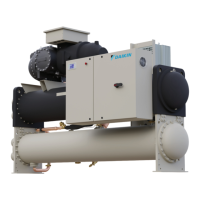
